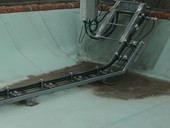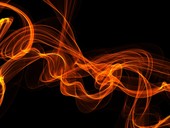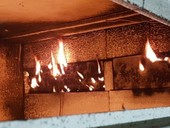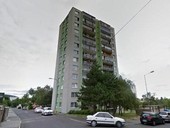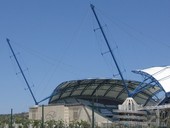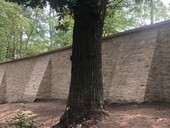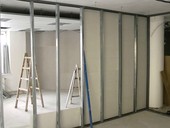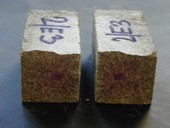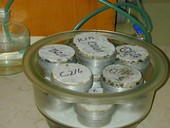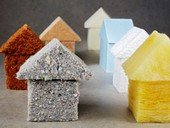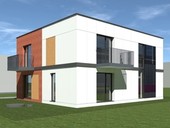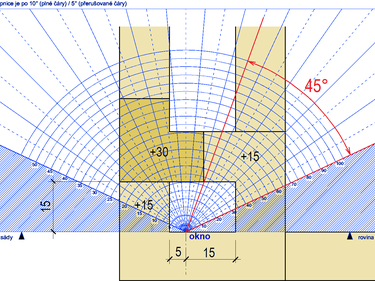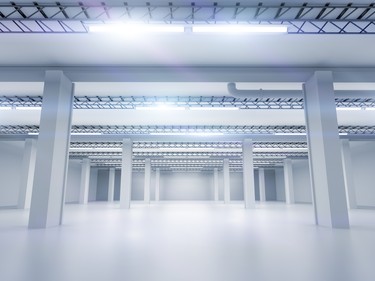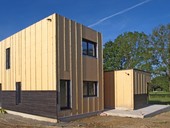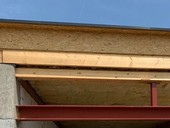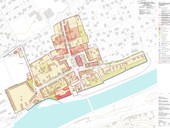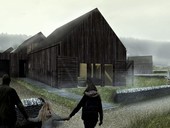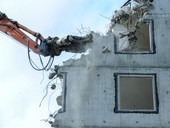The paper deals with construction modifications of the public building complex roof, which was repeatedly flooded. The roof structure consists of a combination of a sloped roof around the perimeter of the building and a flat roof above the inner space of the floor plan. In the article the authors focus on solving the atypical detail required by the roof modifications.
Archiv článků od 22.5.2020 do 5.10.2020
The paper summarizes scenarios of accidental leaks of gases and liquids. Their danger is evidenced by the statistics of fires from explosions in the Czech Republic for the period 2012-2019. It also presents empirical models of selected characteristics of physical and chemical explosions of leaked gases and liquids. The paper is supplemented by an example of calculation.
Textile-reinforced concrete is currently a newly developed material and can be used as an alternative to traditional reinforced concrete structures.It is a combination of high-performance concrete, textile carbon reinforcement, and its synthetic matrix. The main advantages of textile-reinforced concrete are its mechanical properties, while retaining a subtle structural character,and excellent resistance against atmospheric corrosion. Currently, textile-reinforced concrete is used mainly for non-load-bearing structures; however, more widespread usage in load-bearing structures is predicted. This article serves as an evaluation of textile-reinforced concrete in load-bearing structures from the fire safety of buildings‘ point of view as well asa stating prospective limitations resulting from the requirements of the set of standards series CSN 73 08xx.
The present experience has shown, that the most serious effect of the accidental load on prefabricated panel buildings in our conditions is a gas explosion. In addition to the explosion of gas, the effect of elevated temperature during a fire is also significant. During a fire, the mechanical properties of building materials may change. These may not return to their original value at the end of the temperature load. The article describes the design of repair of the load-bearing members the panel building after fire on the 11th floor of the panel system type T-06.
Article follows the previous treatise concerning prestressed steel tubes with just one crossarm (Machacek a Pichal [13]). A stayed column with two crossarms is investigated, while other parameters as those of tested and analysed stayed columns with one crossarm are identical. Critical loadings and decisive buckling modes of unprestressed stayed columns are solved by linear bifurcation. For prestressed stayed columns the analytical method is derived, which enables calculation of critical loading under an arbitrary prestress including the optimal one, resulting into maximal critical loading. The main study introduces geometrically, possibly also materially nonlinear analyses with initial imperfections, using software ANSYS. The nonlinear analysis is shown to be necessary even for critical loading of "ideal" stayed column, while for strength of "imperfect" stayed column, with given initial deflection, is absolutely essential. Finally are analysed impacts of material nonlinearity and numbers of crossarms, followed by practical design recommendations.
Article follows the previous general treatise concerning prestressed steel compression tubes with just one crossarm (Machacek [1]). This article deals with tests of stayed columns, numerical analyses and their evaluation. In the theoretical part the linear bifurcation analysis (2D LBA) to establish critical loads and buckling modes is presented, the geometrically nonlinear analysis to establish strengths of imperfect stayed columns (3D GNIA) and also the geometrically and materially nonlinear analysis to establish strengths of imperfect stayed columns made of stainless steels (3D GMNIA) are introduced. Numerical calculations employ software ANSYS and are validated by tests. Parametrically are investigated impacts of initial deflections, directions of buckling, material nonlinearities and the technique of the stays supports at crossarms. Results are summarized into practical recommendations.
The aim of the study was to determine the functional reliability of the historic wall of the Hvězda summer house and to assess its applicability. The article presents the possibilities of freestanding wall renovation design using optimal technologies, analysis of solution proposals and evaluation of risk factors. The actual design of the renovation was preceded by a detailed structural survey. At the end of the article, the course of implementation work is described, including the selected material solution of restoration. The Klokner Institute of the Czech Technical University participated in the material analyses and the renewal proposal was consulted with the National Heritage Institute.
In modern building systems, sound insulation of walls is often made of multi-layer structures. This article deals with the acoustic operation of such structures and discusses the importance of proper implementation. It also warns against limited sound insulation at low frequencies, which is often not given enough attention. Software for calculating sound insulation - INSUL - was used to compare the acoustic behavior of structures and for simulations.
Carbonatation of concrete (or possibly of cement grout) is a slow destructive process, which continuously causes the change of pH, the corrosion of reinforcement, up to the total loss of strength and cohesion of concrete. It seems, however, that the carbonatation process can be partially influenced by a composition of concrete mixture and by perfect dumping. Greater batches of cement, preferably portland cement, guarantee the best natural preservation of concrete. On the contrary, negative effects of carbonatation demonstrate themselves stronger in the worse dumped concrete and also in concrete with excess of batching water. Finding a suitable recipe for a concrete mixture together with a perfect processing technology lead to a significant prolongation of lifetime of concrete constructions exposed to invasive action of gaseous carbon dioxide.
The addition of structural fibres to concrete has a positive and negative impact on the long-term life of concrete. Polymer fibres, given their low flexibility module, do not always help the concrete to sustain its diverse deformations. Steel fibres on the other side create a hard skeleton to prevent varied deformation, but with the possibility of negative separation of cement paste from fibres. The state of the pore structure of fibre concrete exposed over a long period of time in the CO2 environment can be detected using the method of determining the diffuse resistance coefficient and alternatively the method of determining the capillary elevation. During the process of long-term carbonation of fibre concrete, significant changes occur in the observed values of both physical quantities -- that is, the diffuse resistance coefficient and capillary elevation.
From the point of view of sustainable development in construction, the possibility of using easily renewable raw materials for the production of advanced thermal insulation materials currently represents an interesting way to effectively reduce the energy consumption of buildings. Insulators with ever-increasing thicknesses are being utilised in buildings; the use of these raw materials allows for the insulators’ production without the need for a substantial increase in CO2 emissions and energy consumption.
Natural fibres generally display very low thermal conductivity. Despite their relatively great thickness (in the case of technical fibres) these fibres are porous, and upon reducing pressure they show significant loss of thermal conductivity. Remarkably, it is the same in the case of materials based on glass fibres, which are used industrially in the production of vacuum insulators. When using natural materials as thermal insulators there is a common problem with their high sensitivity to humidity and consequent degradation of thermal insulating properties upon increasing their water content. In the case of using natural fibres for the production of vacuum insulators, these fibres are protected against humidity by a barrier foil that creates a vacuum insulation panel (moreover, the panel also always contains an active dryer), this is why their use in this field is so interesting.
Floor construction is assessed within the thermal field by the heat transfer coefficient and surface temperatures, and in the acoustic field particularly from the point of view of airborne and impact soundproofing. When using ultra-light concrete for the construction of flooring there are unique parameters to consider. Within the contribution, the development occurred of an ultra-light concrete daub that achieved this minimal weight due to an aggregate product based on foam glass. This ultra-light concrete displays a very good ratio of mechanical performance to thermal insulation properties. As a result of these excellent thermal insulation properties, and the design of a concrete daub without joints, the formation of thermal bridges in floor construction can be eliminated.
The article pays attention to the importance of daylight and sun exposure of apartments for public health. The daylight of apartments must be given the same attention as the daylight of workplaces and schools. The way in which the daylight factor Dw (%) of the exterior window plane was introduced into the Czech technical standardization as a criterion is described. The results of a study regarding daylight of living rooms in connection with the limit values of this factor and in connection with the so-called distance angle and window area determined as 1/10 of the floor area of the living room are presented.
Together with the professional journal Podlahy, we have prepared a new series, where the authors get acquainted with the basic standard ČSN 74 4505 Podlahy - Common provisions and subsequently with other standards that are important for the floor area, and also respond to comments from opponents and reviewers. The first part of the series describes the most important provisions of ČSN 74 4505 in an annotated form.
The unfavourable effects of the weather on unprotected wood and timber products can cause changes to the mechanical and chemical properties of the wood, and if unchecked can do irreversible damage. The sheathing of wooden buildings must always be supplemented with surface treatments, and in a large number of cases a contact thermal insulation system is used. The paper presents research focused on the possibility of using a commonly used cement adhesive for bonding thermal insulation to the substrate formed by oriented strand boards. The substrate is provided with several types of penetration coatings or bonding primers and subsequently their influence on the adhesion of the cement adhesive is monitored. The best values were achieved when treating the surface treatment with a modified dispersion with quartz sand. On the other hand, the penetration coating of a mixture of water, nanodispersion of styrene-acrylate copolymer and additives is inappropriate treatment.
Contractors tend to ignore design solutions to reduce the cost of construction. Change of materials, absence of building elements, adjustment of layer composition, application of cheaper alternatives – these are common situations in construction practice. In certain cases, these modifications are without consequences, but in such a situation it is necessary, among other things, to take into account the laws of physics. This article deals with the case in which the structure was replaced – instead of the reinforced concrete ceiling slab, the contractor chose a wooden structure. Wood has significantly different properties than reinforced concrete, so it is necessary to take into account several aspects such as statis, thermo-technical properties and last but not least – with whitch this article deals with – moisture conditions in the structure. The relationship of wood and moisture is specific, the article assesses a specific case of such a structure, lists the possible consequences and finally suggests the most appropriate solution – adjusting the composition of this particular ceiling structure to meet the requirements.
This paper will focus on the question of how we can work with brownfields and it will deal with tools that enable the revitalization and rehabilitation projects in the area. Tools can be divided, for example in terms of spatial planning and urban design, from an environmental perspective, from the perspective of cultural heritage protection and from the perspective of investment opportunities. The result is that the issue of brownfields is handled by numerous institutions and instruments. The aim of this paper is to identify, classify and analyze these instruments. Paper will study instruments from other countries with long-term experience with this issue (eg. France, Great Britain, USA, Germany, Denmark) and analyse the feasibility of their implementation in the Czech Republic and their contribution. Because this theme is a very complex one, this paper is mainly focused on urban planning tools, economic tools (incentive and penalty) and building tools (designed to uphold the intentions of the municipality or the state by building mainly transport and technical infrastructure).
The Architecture and Urban Planning Committee of Protected Landscape Areas in Central Bohemia Region has to deal with low-suitable new family houses architecture design very often. The recommendations for buildings were written to preserve typical architecture form. Due to the passive standards coming be ordinary used in family house design, Administration of the Krivoklatsko PLA initiated the cooperation with Faculty of Civil Engineering CTU in Prague to try find new design for Krivoklatsko PLA. Architecture and Building Engineering students worked out design of new family houses as their Bachelor projects. The goal of this paper is to present student projects as an inspiration for builders and evaluate the usage of new shapes and materials in the design suitability context.
The concept of sustainable development is becoming increasingly popular worldwide. The intensive debate on sustainability issues in the construction industry has led to the development and implementation of various systems for defining and assessing the sustainability of buildings around the world. Concrete is one of the most important and useful materials in the construction sector, which, unfortunately, has an adverse impact on the environment, it is evident that correct procedures for designing concrete structures need to be created. In this paper is an indicator expressing quality, with regard to sustainability, is determined using information on concrete performance characteristics, service life and environmental impact, enabling the quantification and comparison of various cases.
zpět na aktuální články
